Fair Isle is a remote part of Shetland midway between the major islands and the Orkney Islands. It was one of the major selling points of this excursion.
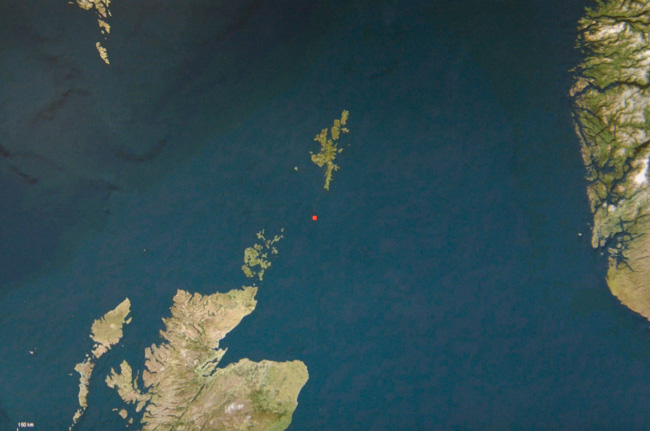
Most people are vague on the geography of this area so I've included an image from our ship's location display.
Fair Isle, the red dot in this picture, is located between the Shetland Islands to the north and the Orkney Islands to the southwest. Politically it is part of the Shetland Island group.
Mainland Scotland is below the Orkneys. St Kilda, which we visited earlier, is the dot to the far left of the image. The landmass on the east is Norway and the islands to the northwest are the Faroe Islands, which we will be visiting later.

We were lucky to land on the island. The heavy swell at the standard anchorage would have prevented disembarkation, but our captain found a sheltered bay that enabled us to get off the ship. An added attraction was a longer Zodiac excursion through stunning rock formations.
The ship scheduled for the previous day had been unable to disembark passengers. The islanders, who set up snacks and sell local products to tourists, had seen our ship leave its original site and figured that we were leaving too. They packed up and went home until the inhabitants of the house nearest the pier saw us coming in and activated the telephone tree!

Once upon a time islanders used dug-outs such as these to shelter fishing boats onshore during the the winter months. They are no longer used. Boats and winches have been abandoned to the elements.

I passed on all of the planned hikes to wander country lanes on my own. The islanders had organized transportation for those who wanted to explore farther afield or who didn't feel up for a hike to the community center for shopping. There was, therefore, a surprising amount of traffic for such a remote place – a car about every five to ten minutes!

As I strolled along the flats I could see the "long walkers" in the far distance on the crest of this ridge. I did not regret my decision. Reports were that it was an interesting hike but grueling.
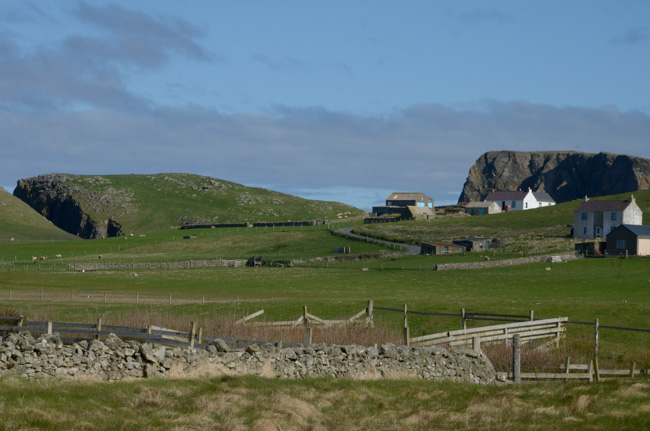
The island is sparsely populated. In the past it supported as many as 400 people. Nowadays the population is around 60 or so. I found a BBC site that describes a plan to attract more residents.
High-speed internet was key to their plan.

Many residents have artistic leanings. This wall was graced with a delightful "found rock." It was one of many "art installations" along the way.

Our birding contingent headed for the Bird Observatory on the other side of the island, but I was content with the common hedgerow birds like this blackbird.

The little museum had a variety of artifacts including a mock-up living room with this fiddle. I didn't think to ask if visitors were invited to play. (Since the D-string is flapping in the breeze, it clearly isn't tuned and seems to have a nasty crack in the body.) I was pleased to see this indication of the importance of music in island life.
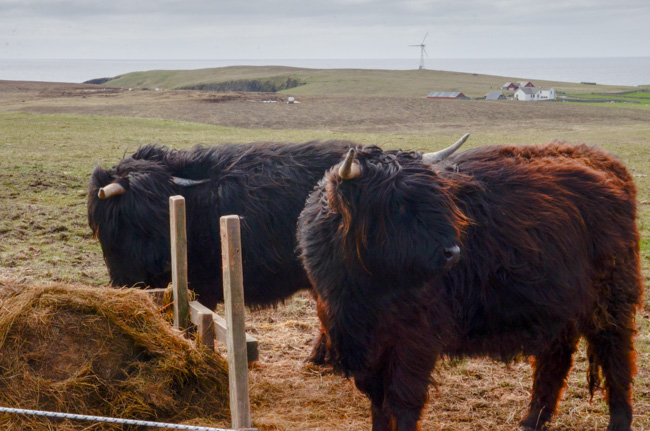
Practically all the livestock in the areas I visited were sheep, but these Highland Cattle are also adapted to the cold windy climate with poor forage. Their meat is highly prized.

Islanders welcomed us in the cozy community center. Tea, cookies and other snacks were abundant and several folks had displays of their wares for sale. Fair Isle is famous for its knitting, but there were also paintings and woodworking. The Condé Nast Travel article at the link states that it takes years to get sweaters, but there were some on offer here. I wasn't looking for a sweater, though. I was looking for a nifty Fair Isle kep or fisherman's hat. The maker, Hollie Shaw, who is mentioned in the Condé Nast write-up, described how the hats are made. When I noted that each tag specified both the knitter and the "finisher," I inquired as to the distinction. She showed me how the finisher was responsible for weaving the seam so that it was impossible to tell where it was. It was quite clear that the artistry deserved its own credit.
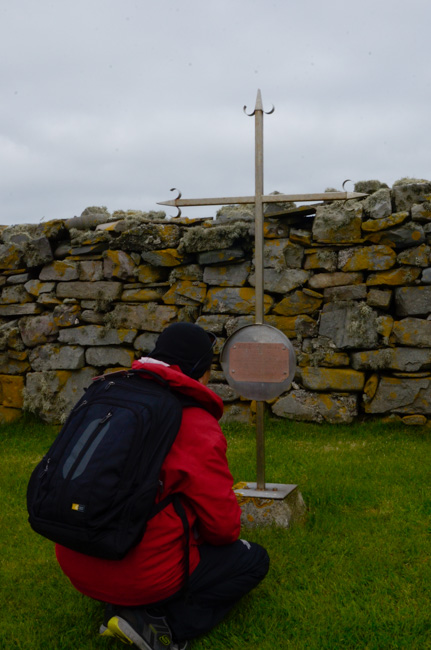
We found this monument in a local cemetery. The plaque reads (thanks to Google translate): In memory of the heroic sailors of the Spanish army buried in this noble and fraternal land in the year of our Lord 1588.
The monument was placed by the Order of the Ocean Sea in 1984. I've not been able to find out much about that order, but they have long memories.
Anyone who has watched the PBS series Shetland or read the books by Ann Cleeves is aware that the detective Jimmy Perez, born on Fair Isle, descends from a survivor of a Spanish Armada shipwreck.

Shetland sheep are noted for their soft wool. Many ewes twin and some have triplets. They come in a variety of colors and patterns.
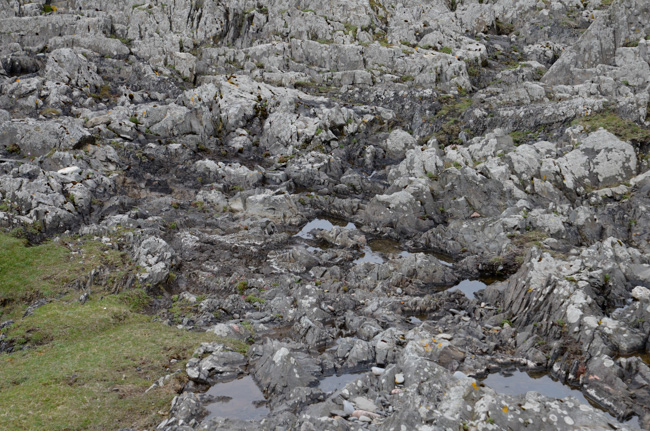
On my birding expedition on Islay I learned the importance of knowing the habitat and song of a bird. As I was walking to the lighthouse, I heard a very distinctive bird call coming from this craggy landscape. Had I known what bird was likely to be found in this environment and what bird would make that particular call, I might have been able to see it. As it was, I took a picture hoping to be able to find a bird, any bird, in it.
Nope.

It's possible that the mystery bird that I heard but never saw was a ringed plover like this one that I photographed nearby.

The real attraction of this area for me, however, was not the birds but the lighthouse. It was built by David A. & Charles Stevenson in 1892 and was the last Scottish lighthouse to be automated – in 1998.
I had a nice chat with a man working around the area who deplored the fact that the light was no longer staffed and felt that the buildings were going to wrack & ruin. Google tells me that the lighthouse buildings, not the light tower itself, are now a B&B. Perhaps B&B managers have less time on their hands to polish and paint. It's interesting to see the list of caveats at the link.
Click your "back" button to return to the previous page or click for our picture album.